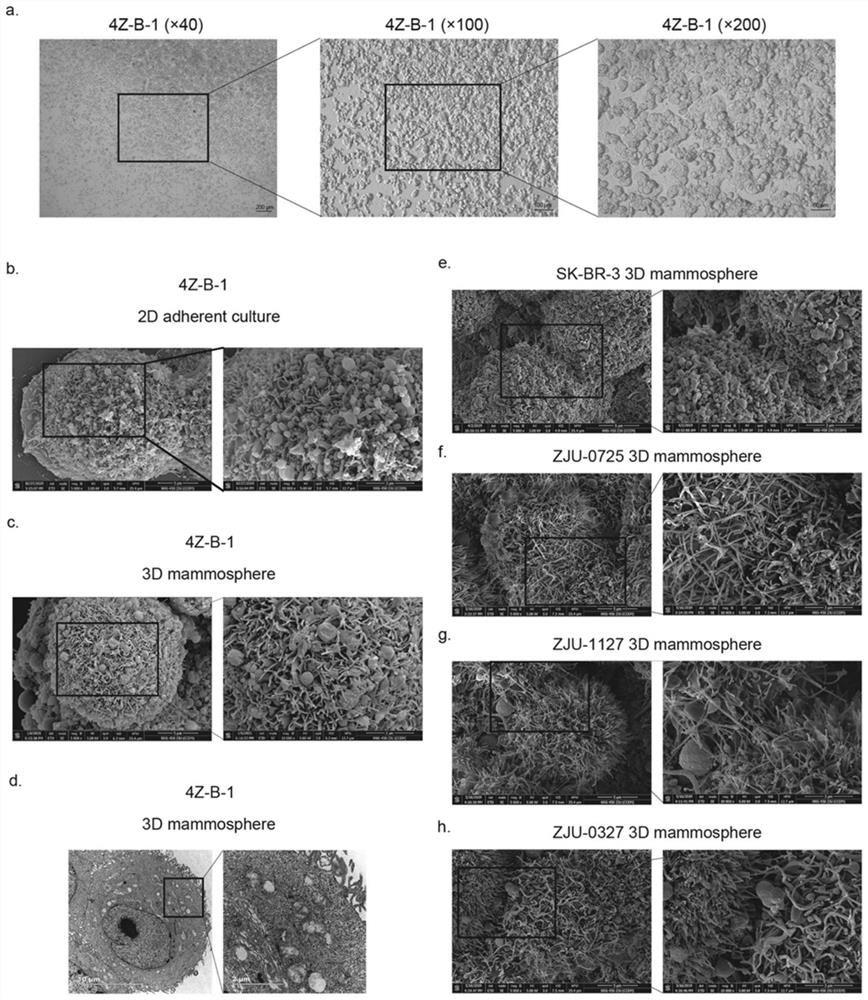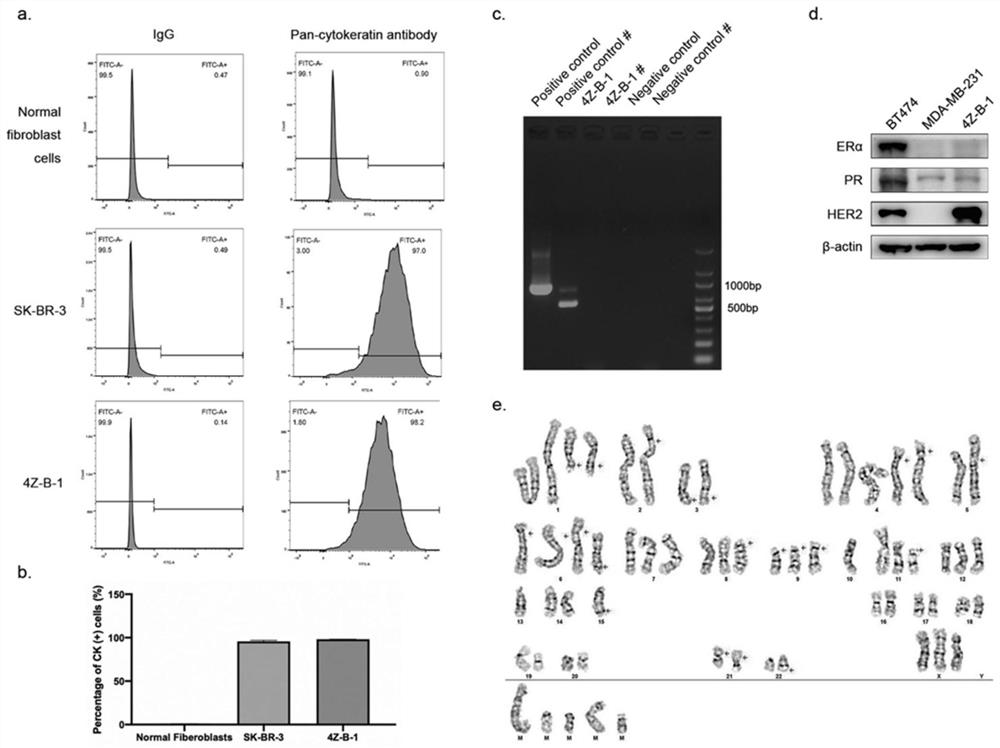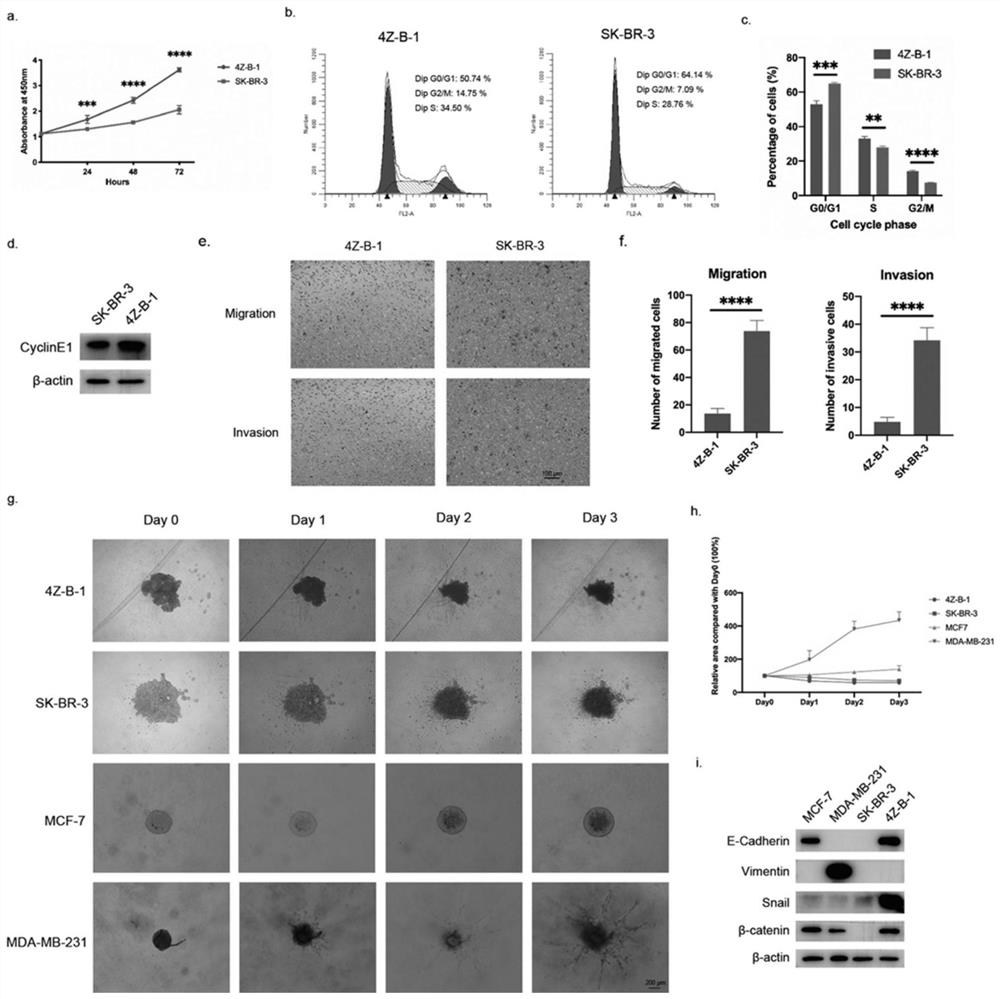Human breast cancer pleural effusion metastasis cell line and its application
A human breast cancer, cell line technology, applied in tumor/cancer cells, animal cells, vertebrate cells, etc.
- Summary
- Abstract
- Description
- Claims
- Application Information
AI Technical Summary
Problems solved by technology
Method used
Image
Examples
Embodiment 1
[0043] From a 69-year-old female patient with invasive ductal carcinoma of breast cancer (primary tumor ER + , PR + , HER2 + ) of metastatic pleural fluid, centrifuged to obtain malignant cells, resuspended in phosphate buffer saline containing double antibody and centrifuged 3 times. Resuspend the pellet with DMEM medium containing 10% fetal bovine serum, spread it on a sterile 10cm petri dish, and place it in 37°C CO 2 Cultivate in an incubator, do not move the culture dish for at least 2 days, which is conducive to the adhesion of primary tumor cells; when the cells grow to 70-80% in the dish, transfer them to 6 10cm culture dishes, observe under the microscope every day, and wait for observation Under the microscope, when the cells are oval and sheet-like distributed cell clusters, scrape off the surrounding fibroblasts, wash 3 times with phosphate buffer saline, add new medium to continue the culture; when the cell clusters grow to be visible to the naked eye, trypsin ...
Embodiment 2
[0045] The subcultured human breast cancer pleural effusion metastatic cell line 4Z-B-1 was used to observe the growth of the cells under an optical microscope (ZEISS inverted microscope).
[0046] Microscopic examination: if figure 1 As shown in middle a, the cytological morphological picture shows that the cells have good refraction, the cells are in good growth state, the background is clear, and most of the cells are nearly round. figure 1 Middle a is the morphology of primary breast cancer cells at passage 50.
Embodiment 3
[0048] (1) Sample preparation: when preparing two-dimensional cell slide samples, 5×10 4 A cultured 4Z-B-1 cell was plated on a sterile cell slide, and placed in an incubator for 24 hours, waiting for the cells to fully adhere to the wall; when preparing a three-dimensional cell spheroid sample, 1×10 7 Spread the cultured 4Z-B-1 cells into a low-adsorption culture dish, collect the formed cell spheres in a 15ml centrifuge tube after 72 hours, and then wash and centrifuge again to collect;
[0049] (2) Fix: Add 2.5% glutaraldehyde fixative to the cells for 2 hours, wash 3 times with 0.1M phosphate buffer, add 1% glutaric acid fixative for 2 hours, wash 3 times with 0.1M phosphate buffer;
[0050] (3) Dehydration: 30% ethanol → → 50% ethanol → → 70% ethanol → → 90% ethanol → → 95% ethanol → → 100% ethanol (2 times) in a refrigerator at 4°C, each process is maintained for 15 -20min;
[0051] (4) Drying: place the sample at the critical point of the sample to dry;
[0052] (5) ...
PUM
 Login to View More
Login to View More Abstract
Description
Claims
Application Information
 Login to View More
Login to View More - R&D
- Intellectual Property
- Life Sciences
- Materials
- Tech Scout
- Unparalleled Data Quality
- Higher Quality Content
- 60% Fewer Hallucinations
Browse by: Latest US Patents, China's latest patents, Technical Efficacy Thesaurus, Application Domain, Technology Topic, Popular Technical Reports.
© 2025 PatSnap. All rights reserved.Legal|Privacy policy|Modern Slavery Act Transparency Statement|Sitemap|About US| Contact US: help@patsnap.com



